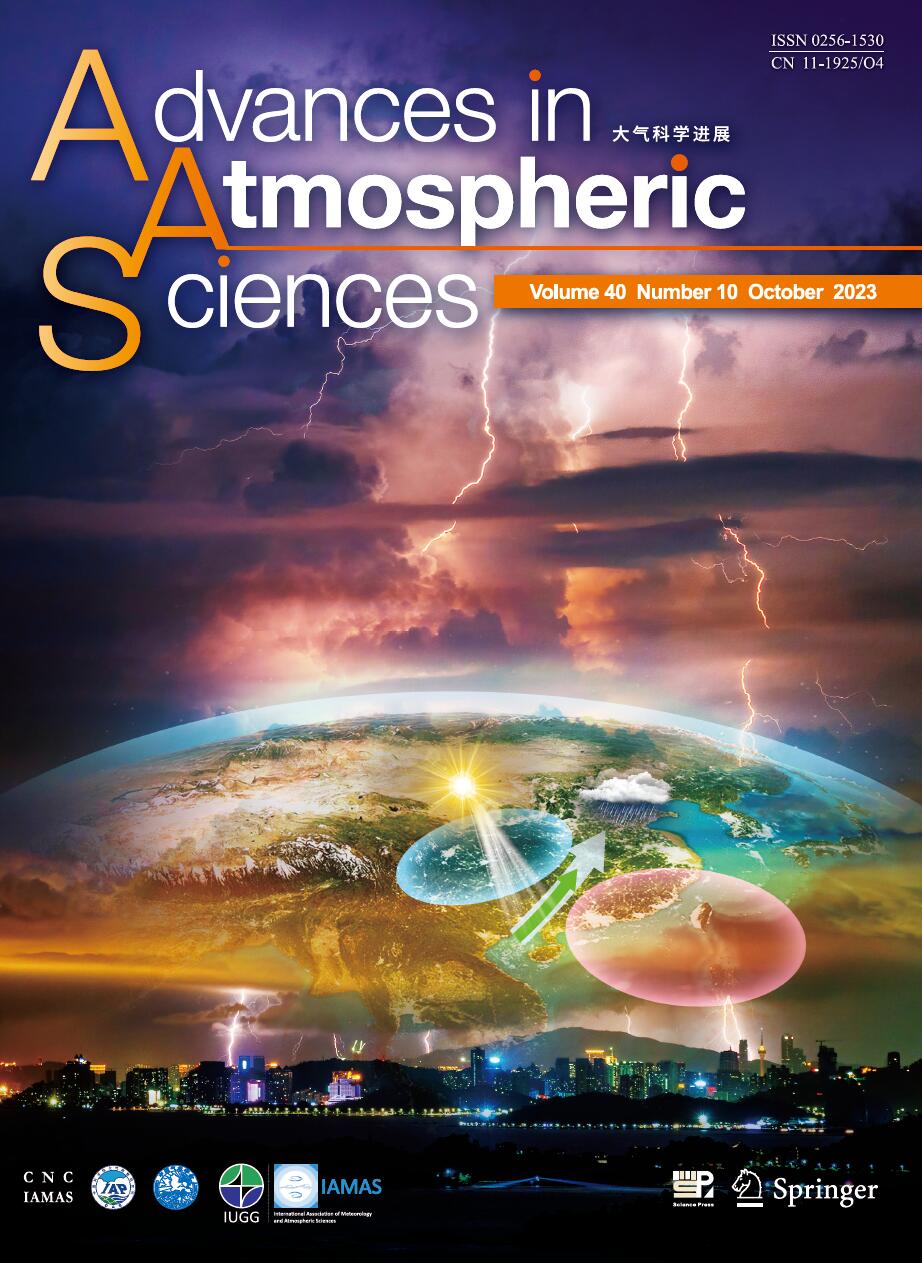| [1] |
Fang Juan, Wu Rongsheng,
2001: Topographic Effect on Geostrophic Adjustment and Frontogenesis, ADVANCES IN ATMOSPHERIC SCIENCES, 18, 524-538.
doi: 10.1007/s00376-001-0042-0
|
| [2] |
Xiaohua XU, Daocheng YU, Jia LUO,
2018: The Spatial and Temporal Variability of Global Stratospheric Gravity Waves and Their Activity during Sudden Stratospheric Warming Revealed by COSMIC Measurements, ADVANCES IN ATMOSPHERIC SCIENCES, 35, 1533-1546.
doi: 10.1007/s00376-018-5053-1
|
| [3] |
Zhang Fuqing, Steven E. Koch, Christopher A. Davis,
2000: A survey of Unbalanced Flow Diagnostics and Their Application, ADVANCES IN ATMOSPHERIC SCIENCES, 17, 165-183.
doi: 10.1007/s00376-000-0001-1
|
| [4] |
Wu Rongsheng, Fang Juan,
2001: Mechanism of Balanced Flow and Frontogenesis, ADVANCES IN ATMOSPHERIC SCIENCES, 18, 323-334.
doi: 10.1007/BF02919313
|
| [5] |
Yong. L. McHall,
1990: Generalized Available Potential Energy, ADVANCES IN ATMOSPHERIC SCIENCES, 7, 395-408.
doi: 10.1007/BF03008870
|
| [6] |
ZUO Qunjie, GAO Shouting, LU Daren,
2012: Kinetic and Available Potential Energy Transport during the Stratospheric Sudden Warming in January 2009, ADVANCES IN ATMOSPHERIC SCIENCES, 29, 1343-1359.
doi: 10.1007/s00376-012-1198-5
|
| [7] |
Dong ZHENG, Yijun ZHANG, Qing MENG, Luwen CHEN, Jianru DAN,
2016: Climatology of Lightning Activity in South China and Its Relationships to Precipitation and Convective Available Potential Energy, ADVANCES IN ATMOSPHERIC SCIENCES, 33, 365-376.
doi: 10.1007/s00376-015-5124-5
|
| [8] |
H.L. Kuo,
1995: Three-dimensional Global Scale Permanent-wave Solutions of the Nonlinear Quasigeostrophic Potential Vorticity Equation and Energy Dispersion, ADVANCES IN ATMOSPHERIC SCIENCES, 12, 387-404.
doi: 10.1007/BF02657001
|
| [9] |
LI Yuefeng,
2007: Conversion of Kinetic Energy from Synoptic Scale Disturbance to Low-Frequency Fluctuation over the Yangtze River Valley in the Summers of 1997 and 1999, ADVANCES IN ATMOSPHERIC SCIENCES, 24, 591-598.
doi: 10.1007/s00376-007-0591-y
|
| [10] |
Xu Jianjun,
1993: Quasi-40-Day Oscillation and Its Teleconnection Struc-ture together with the Possible Dependence on Conversion of Barotropic Unstable Energy of Temporal Mean Flow, ADVANCES IN ATMOSPHERIC SCIENCES, 10, 193-200.
doi: 10.1007/BF02919141
|
| [11] |
Majid M. Farahani, Wu Rongsheng,
1998: A Numerical Study of Geostrophic Adjustment and Frontogenesis, ADVANCES IN ATMOSPHERIC SCIENCES, 15, 179-192.
doi: 10.1007/s00376-998-0038-0
|
| [12] |
Ji Zhongzhen, Wang Bin, Zhao Ying, Yang Hongwei,
2002: Total Energy Conservation and the Symplectic Algorithm, ADVANCES IN ATMOSPHERIC SCIENCES, 19, 459-467.
doi: 10.1007/s00376-002-0079-8
|
| [13] |
T. S. Spassova,
1992: A Theoretical Test of the Geostrophic Momentum Approximation, ADVANCES IN ATMOSPHERIC SCIENCES, 9, 251-255.
doi: 10.1007/BF02657516
|
| [14] |
Li Hongji, Xu Hong, Wang Ronghua,
1988: A HIGH-RESOLUTION ANALYSIS METHOD OF INSTABILITY ENERGY, ADVANCES IN ATMOSPHERIC SCIENCES, 5, 75-86.
doi: 10.1007/BF02657348
|
| [15] |
Shou Shaowen, Li Shenshen,
1991: Diagnosis of Kinetic Energy Balance of a Decaying Onland Typhoon, ADVANCES IN ATMOSPHERIC SCIENCES, 8, 479-488.
doi: 10.1007/BF02919270
|
| [16] |
Runkua Yang, J. Shukla, P.J. Sellers,
1994: The Influence of Changes in Vegetation Type on the Surface Energy Budget, ADVANCES IN ATMOSPHERIC SCIENCES, 11, 139-161.
doi: 10.1007/BF02666542
|
| [17] |
Yaokun LI, Jiping CHAO, Yanyan KANG,
2021: Variations in Wave Energy and Amplitudes along the Energy Dispersion Paths of Nonstationary Barotropic Rossby Waves, ADVANCES IN ATMOSPHERIC SCIENCES, 38, 49-64.
doi: 10.1007/s00376-020-0084-9
|
| [18] |
Yaokun LI, Jiping CHAO, Yanyan KANG,
2022: Variations in Amplitudes and Wave Energy along the Energy Dispersion Paths for Rossby Waves in the Quasigeostrophic Barotropic Model, ADVANCES IN ATMOSPHERIC SCIENCES, 39, 876-888.
doi: 10.1007/s00376-021-1244-2
|
| [19] |
Qiu Yongyan,
1993: On the Seasonal Transition and the Interannual Variability in Global Kinetic Energy at 500 hPa, Accompanied with Anomalies of Energy during the 1982 / 83 ENSO, ADVANCES IN ATMOSPHERIC SCIENCES, 10, 248-256.
doi: 10.1007/BF02919148
|
| [20] |
Minwei Qian, N. Loglisci, C. Cassardo, A. Longhetto, C. Giraud,
2001: Energy and Water Balance at Soil-Air Interface in a Sahelian Region, ADVANCES IN ATMOSPHERIC SCIENCES, 18, 897-909.
|















 AAS Website
AAS Website 
 AAS WeChat
AAS WeChat 
 DownLoad:
DownLoad: